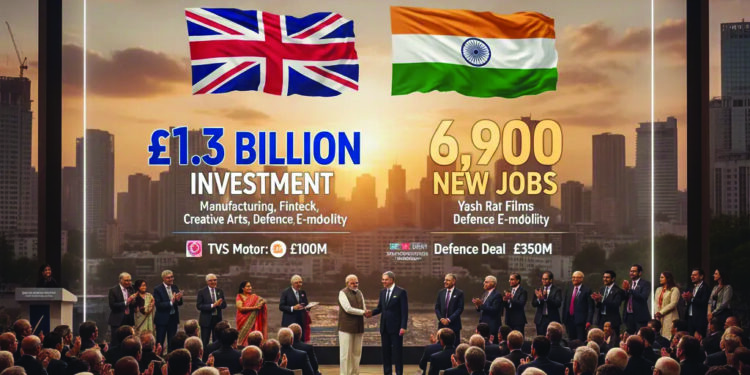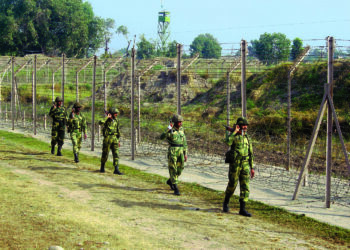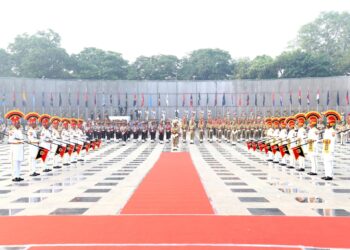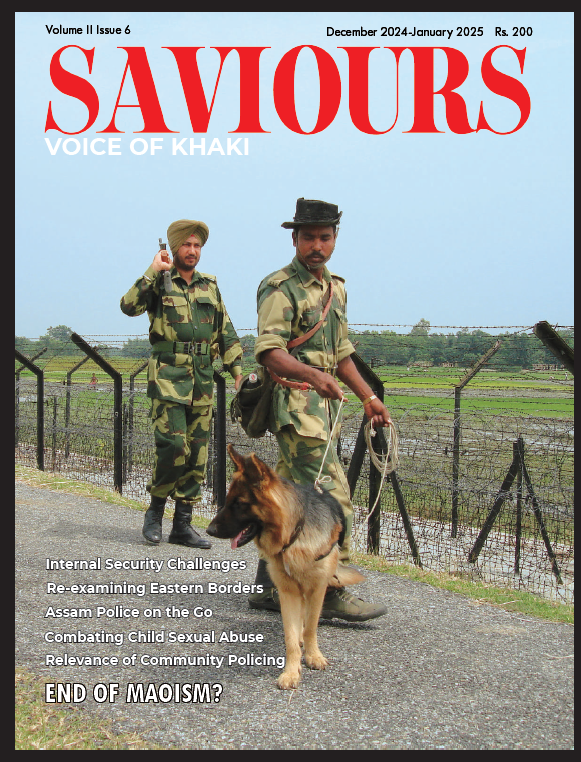A New Phase in a Historic Relationship
The UK–India relationship has entered a defining era—one marked by confidence, capability, and consequence. The recent visit of British Prime Minister Keir Starmer to Mumbai symbolised more than just a diplomatic engagement; it was the rollout of the landmark UK–India Comprehensive Economic and Trade Agreement (CETA), signed in July 2025. Behind this success stands Prime Minister Narendra Modi’s steady, outcome-oriented diplomacy that has redefined India’s global partnerships—not as transactional, but as transformational.
This breakthrough comes at a time when President Donald Trump’s tariff shocks are unsettling ongoing US trade negotiations, redrawing global trade dynamics and prompting major economies to seek diversified, dependable partners. Against that backdrop, India’s growing investment presence in the UK demonstrates its transition from a recipient of foreign direct investment (FDI) to an emerging global economic giant—one that now channels its own capital into post-Brexit Britain across a wide range of sectors.
Delivering Results on the Ground
In just two days, the partnership produced tangible outcomes that Britain could count in pounds and jobs. Sixty-four Indian companies announced investments worth £1.3 billion in the United Kingdom, translating into 6,900 new jobs across sectors from manufacturing to fintech. Additional collaborations—such as Yash Raj Films producing three major movies in the UK and a £350 million missile production deal for India’s defence requirements—added thousands more to the tally. These aren’t mere pledges; they reflect India’s growing economic stature and the credibility its corporate sector enjoys globally.
Significant Indian Investments in the UK
The following Indian companies and groups have made significant commitments during the visit:
- TVS Motor Company: £250 million investment in Norton Motorcycles and e-bikes, creating 300 jobs.
- TVS Mobility: £250 million investment to expand operations and double UK revenues, generating 1,350 new jobs.
- Cyient Ltd.: £100 million investment in semiconductors, geospatial technology, and clean energy, creating 300 jobs.
- Hero Motors Company: £100 million over five years in e-mobility and aerospace, generating 300 jobs.
- Nazara Technologies: £50 million in gaming and ad-tech, building a 200-person workforce.
- Muthoot Finance UK: £100 million investment to expand its branch network, creating 80 jobs.
- Yash Raj Films: Three new Bollywood blockbusters to be filmed in the UK, creating 3,000 jobs in the creative sector.
- Defence Partnership: £350 million deal for missile manufacturing in Northern Ireland, securing 700 jobs.
India’s Confidence, Britain’s Opportunity
For the UK, the partnership with India offers an anchor in a world of economic realignments post-Brexit. For India, it is a validation of its expanding global footprint as both an investment source and a strategic market. The fact that Indian capital is flowing into British infrastructure, technology, and creative industries shows how Modi’s government has repositioned India as a confident outward investor—an equal, not a supplicant.
The Power of a Thought-Through Trade Architecture
The CETA itself represents one of the most comprehensive trade frameworks India has ever signed. Reducing or eliminating tariffs on nearly all traded goods opens new channels for exports on both sides. Analysts estimate that this could expand bilateral trade by £25 billion annually and add almost £5 billion to the UK’s GDP by 2040. But beyond numbers lies strategic intent: an architecture designed to withstand shocks, encourage innovation, and bind two democracies closer through commerce and technology.
Institutionalising Implementation
Both governments have moved swiftly to ensure that CETA doesn’t gather dust. The Joint Economic and Trade Committee (JETCO) has been repositioned as a permanent monitoring body, ensuring faster implementation, investor support, and policy coordination. Such institutional clarity—rare in international trade deals—reflects Modi’s insistence on execution as the measure of diplomacy.
From Trade to Trust
The UK delegation accompanying Starmer—126 business leaders from across industries—was the largest ever to visit India. The size and diversity of the mission signalled the trust global investors now place in India’s regulatory stability and growth trajectory. From semiconductors to geospatial technologies, from clean energy to creative industries, the range of joint ventures announced reflects the breadth of mutual confidence.
The Modi–Goyal Framework of Delivery
India’s Commerce and Industry Minister Piyush Goyal deserves particular credit for steering the complex trade and investment negotiations to their successful conclusion. His blend of clarity, firmness, and cooperative spirit ensured that the agreement balanced mutual interests without compromising India’s core economic priorities. Goyal’s consistent emphasis on long-term sustainability and job creation has given the CETA not just political endorsement but operational credibility.
Mumbai: The Financial Heartbeat of the Partnership
The fact that the final contours of the deal were sealed in Mumbai is symbolically significant. It showcases not only the financial clout of Maharashtra’s capital but also reinforces Mumbai’s role as India’s gateway to global capital. While broader politics and diplomacy may be orchestrated from New Delhi, Mumbai remains the country’s nerve centre of finance—home to the Reserve Bank of India, SEBI, NSE, the Bombay Stock Exchange, and the headquarters of many of India’s leading conglomerates. The city’s hosting of the UK–India economic dialogues and investment announcements underlines that modern diplomacy now integrates seamlessly with financial geography.
A Partnership Built for the Future
The commitment to double bilateral trade to $100 billion by 2030 is not merely aspirational—it is achievable. With shared democratic values, a rising Indian consumer market, and the UK’s post-Brexit appetite for dynamic partners, the roadmap ahead looks robust. If anything, this partnership shows how diplomacy, when rooted in economic logic and mutual respect, can deliver outcomes that neither protectionism nor rhetoric ever could.
The Bigger Picture
The UK gains investment, jobs, and a stake in Asia’s fastest-growing economy. India gains access, recognition, and reinforcement of its global credibility. Both gain a resilient partnership fit for a turbulent world. And at the centre of this success stands the Modi–Goyal model of purposeful trade and commerce-based diplomacy—turning vision into verifiable results and reaffirming that in today’s multipolar world, India’s rise is not at the expense of others but a shared opportunity for all.
( The article first appeared on the author’s blog KBS Chronicles.)








